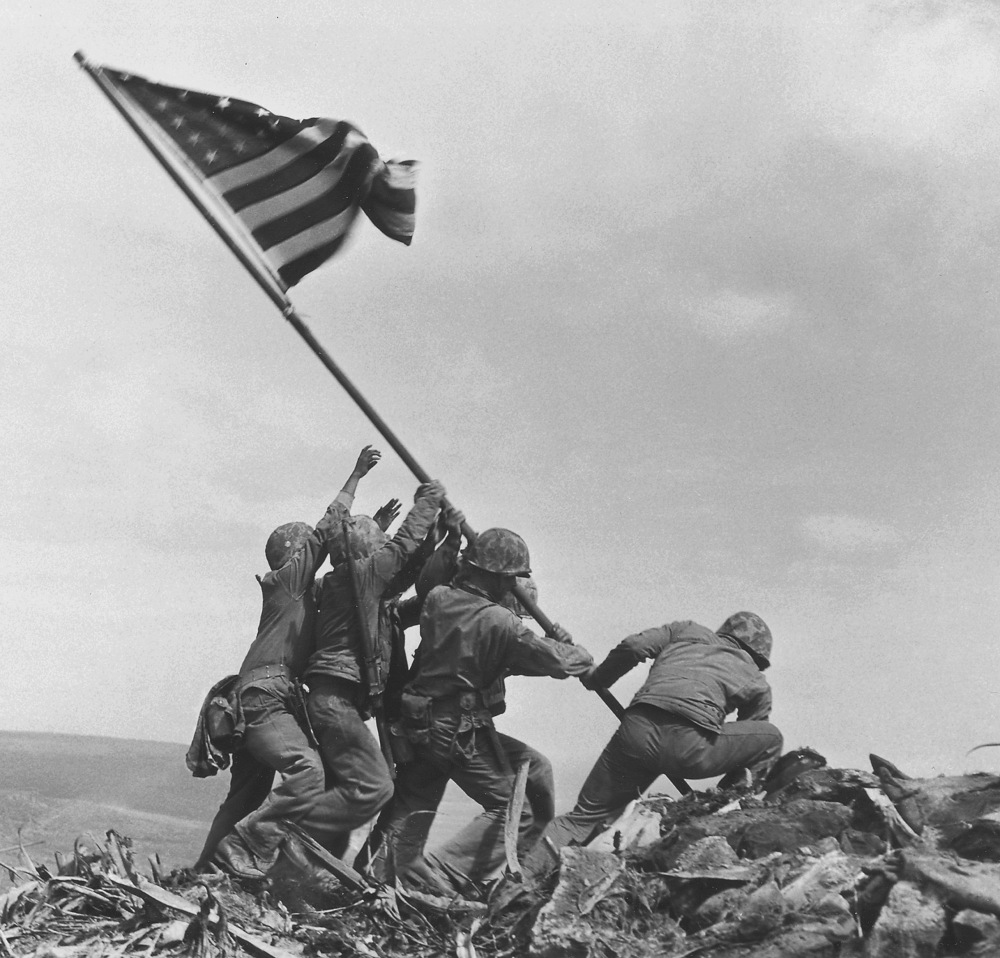DES MOINES, Iowa — The Marine Corps says it has begun investigating whether it mistakenly identified one of the men shown raising the U.S. flag at Iwo Jima in one of the iconic images of World War II after two amateur history buffs began raising questions about the picture.
The Marines announced the inquiry more than a year after Eric Krelle, of Omaha, Nebraska, and Stephen Foley, of Wexford, Ireland, began raising doubts about the identity of one man. In November 2014, the Omaha World-Herald published an extensive story about their claims and Saturday was the first to report the Marines were looking into the matter.
Associated Press photographer Joe Rosenthal shot the photo on Feb. 23, 1945, on Mount Suribachi, amid an intense battle with the Japanese. Rosenthal didn’t get the names of the men, but the photo immediately was celebrated in the U.S. and President Franklin Roosevelt told the military to identify the men.
THREE KILLED ON IWO JIMA
After some confusion, the Marines identified the men as John Bradley, Rene Gagnon, Ira Hayes, Harlon Block, Michael Strank and Franklin Sousley. All were Marines except Bradley, who was a Navy corpsman.
Block, Strank and Sousley were killed in fighting at Iwo Jima before the photo was distributed in the U.S.
On Monday, the Marines issued a statement saying: “The Marine Corps is examining information provided by a private organization related (to) Joe Rosenthal’s Associated Press photograph of the second flag raising on Iwo Jima.
“Rosenthal’s photo captured a single moment in the 36-day battle during which more than 6,500 US servicemen made the ultimate sacrifice for our Nation and it is representative of the more than 70,000 US Marines, Sailors, Soldiers and Coast Guardsmen that took part in the battle. We are humbled by the service and sacrifice of all who fought on Iwo Jima.”
Iwo Jima, a tiny island 660 miles south of Tokyo, was the site of an intense battle that began on Feb. 19, 1945, between about 70,000 Marines and 18,000 Japanese soldiers. Capturing Iwo Jima was deemed essential to the U.S. war effort because Japanese fighter planes were taking off from the island and intercepting American bombers.
Hal Buell, a retired AP executive news photo editor, had long discussions with Rosenthal about the flag-raising picture and in 2006 wrote a book about the famous image.
‘THIS IS UNBELIEVABLE’
Buell said after Rosenthal shot the photo, the flag-raisers quickly moved on to other tasks, and it was impossible for him to get their names. That was left to the Marines after the picture prompted an overwhelming response and the government decided to use the image in an upcoming sale of war bonds to finance the continued fighting. Rosenthal died in 2006.
The identification of the six servicemen has been accepted for decades, but the World-Herald reported that Foley began noticing possible discrepancies in the picture. He enlisted the help of Krelle, who maintains a website dedicated to the Marines’ 5th Division.
After examining the photo along with other pictures taken that day, they concluded that the man identified as Bradley was actually Harold Henry Schultz, a private first class from Detroit. Schultz died in 1995.
Bradley’s son, James Bradley, wrote a best-selling book about the flag raisers, “Flags of Our Fathers,” which was later made into a movie directed by Clint Eastwood.
Bradley told the AP he was shocked to hear the Marines were investigating the identity of the men. “This is unbelievable,” said Bradley, who interviewed the surviving Marines and Rosenthal.
Send questions/comments to the editors.



Success. Please wait for the page to reload. If the page does not reload within 5 seconds, please refresh the page.
Enter your email and password to access comments.
Hi, to comment on stories you must . This profile is in addition to your subscription and website login.
Already have a commenting profile? .
Invalid username/password.
Please check your email to confirm and complete your registration.
Only subscribers are eligible to post comments. Please subscribe or login first for digital access. Here’s why.
Use the form below to reset your password. When you've submitted your account email, we will send an email with a reset code.